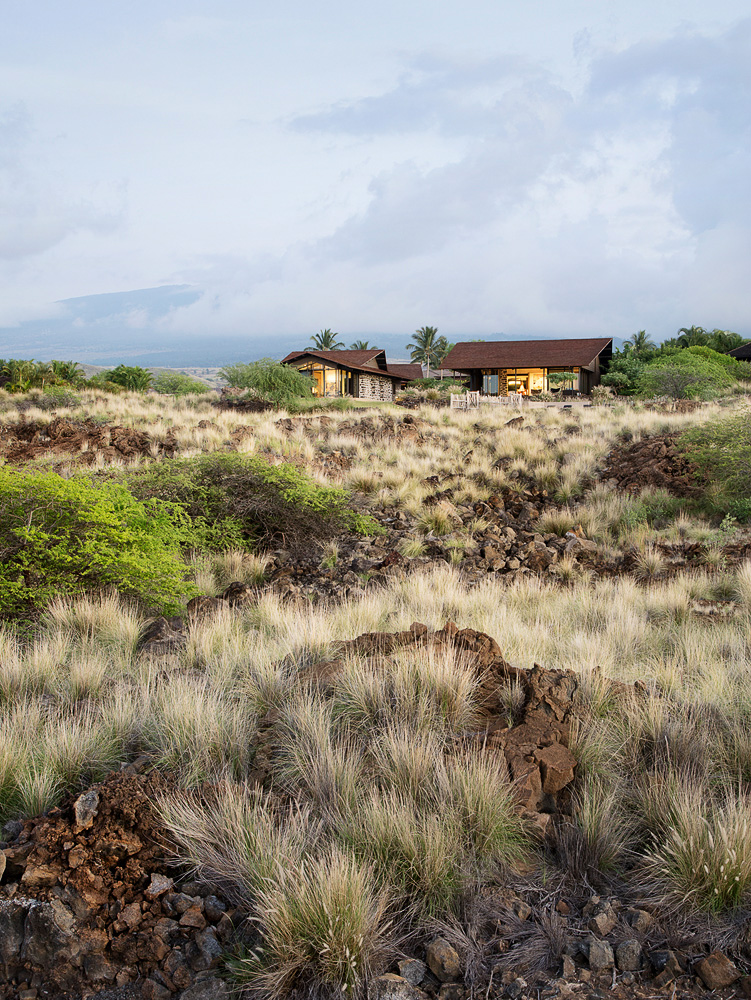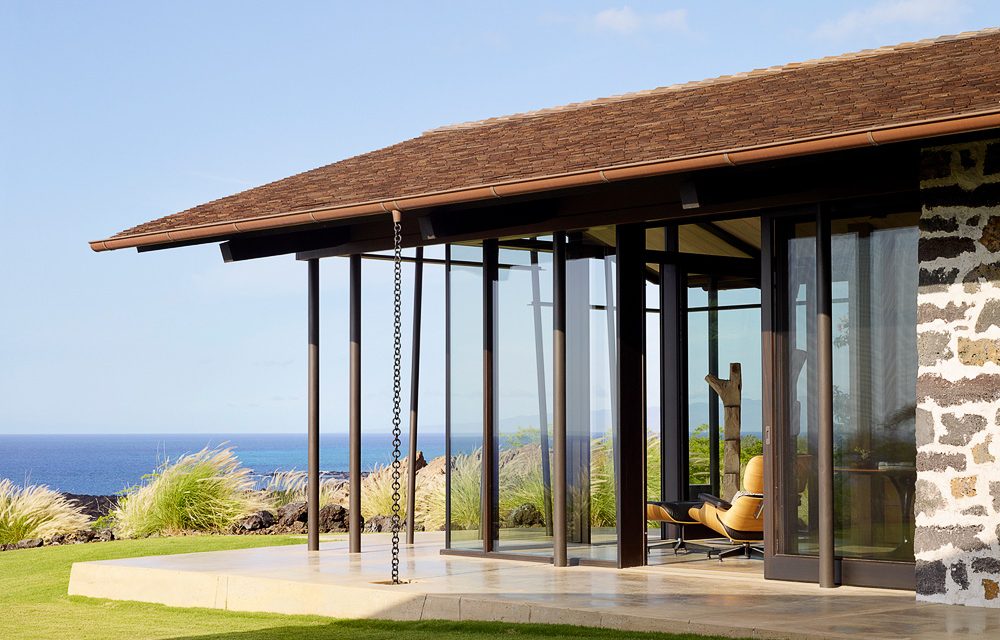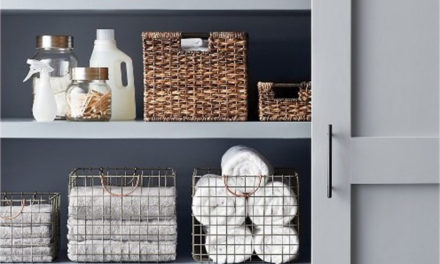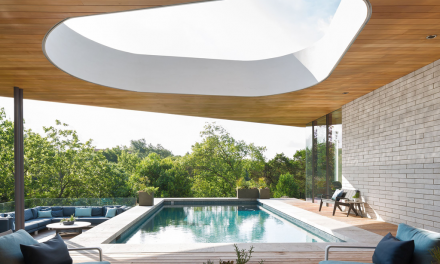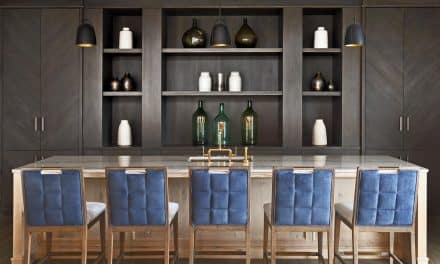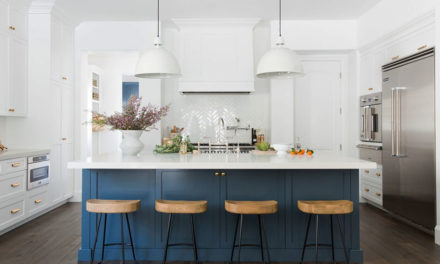Set atop a hardened lava flow with views of sky, sun, and water, this Hawaiian retreat strikes a balance between modernity and tradition. Old and new ebb and flow through a simple composition of small structures linked by a lush courtyard and a series of walkways and patios.
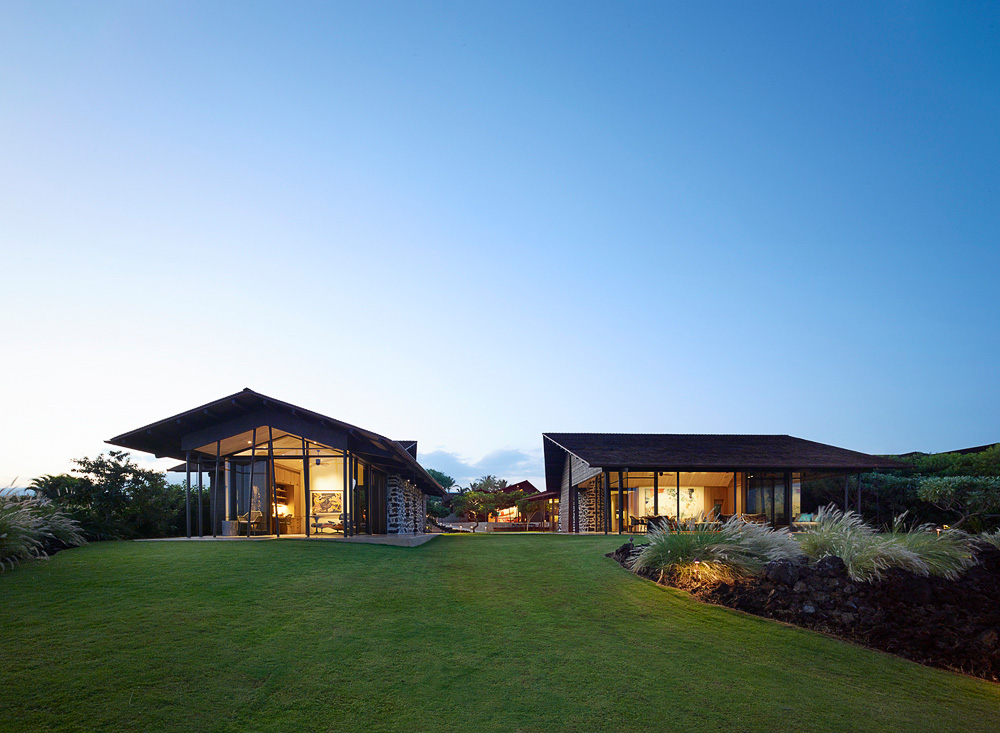
Composed of four independent structures, including a cedar-clad main living pod, the siting balances the desire to host friends and family as well as privacy. Architecture and interiors are modern, yet rely heavily on traditional materials and touchstones.
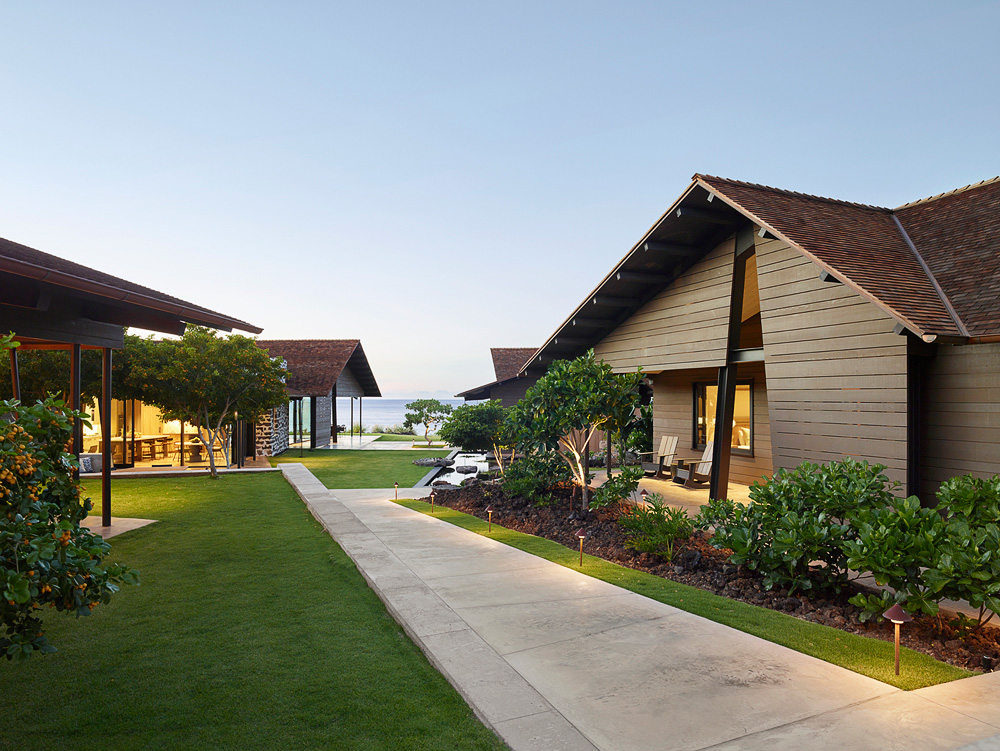
“We think of it as a village,” notes Greg Warner, of the arrangement, a grouping of four separate structures. “The home is built to rest gently in the landscape, but also to last for generations. We execute enduring architecture—in the sense of material quality, but also livability. We have high hopes for the legacy of this project.”
Traditional Hawaiian villages, typically organized in loose clusters, inspired both the 1.5-acre site plan and the architectural style. The composition of canted steel columns, steep-pitched roofs, and rhomboidal window and door openings “represent a contemporary interpretation of early Hawaiian hale shelters,” Warner says. “They’re like modernist lean-tos.”
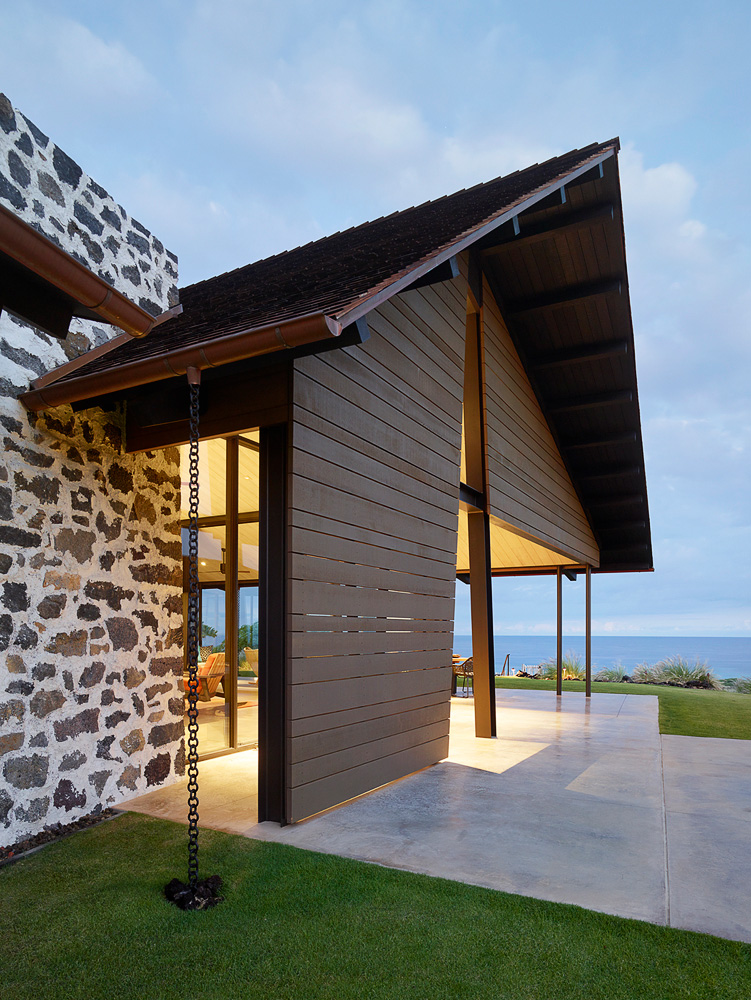
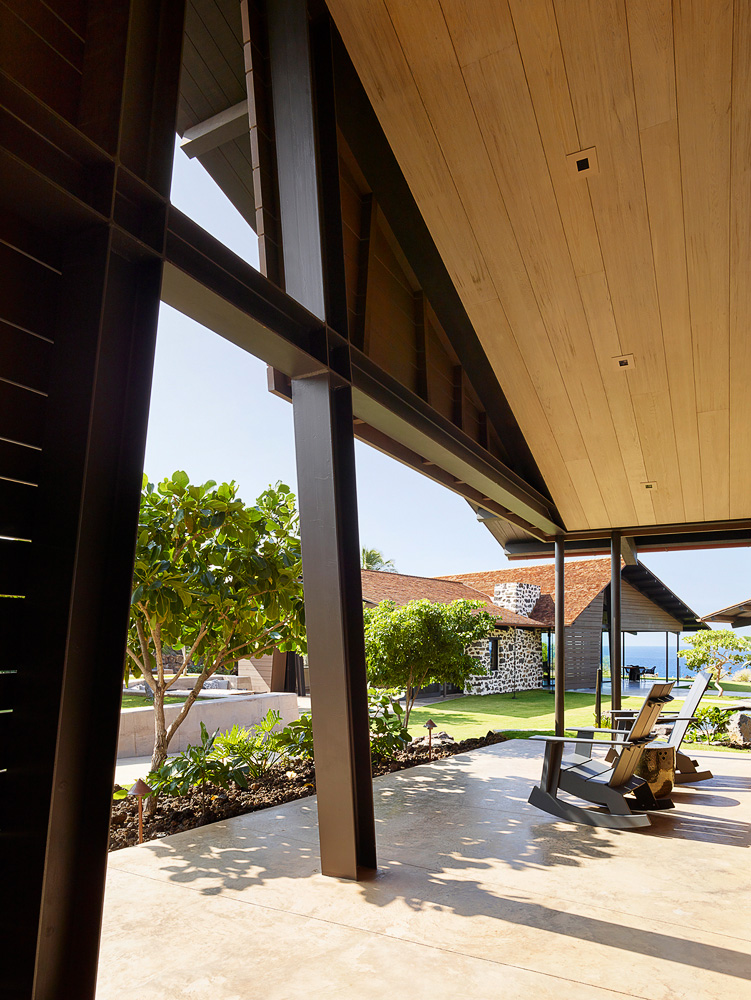
Compound Surrounded by Field of Lava + Native Grasses
The structures housing the master suite and the main living areas are located on the site’s ocean side. Set back deeper in the property are pods containing the two guest suites and communal relaxation areas.
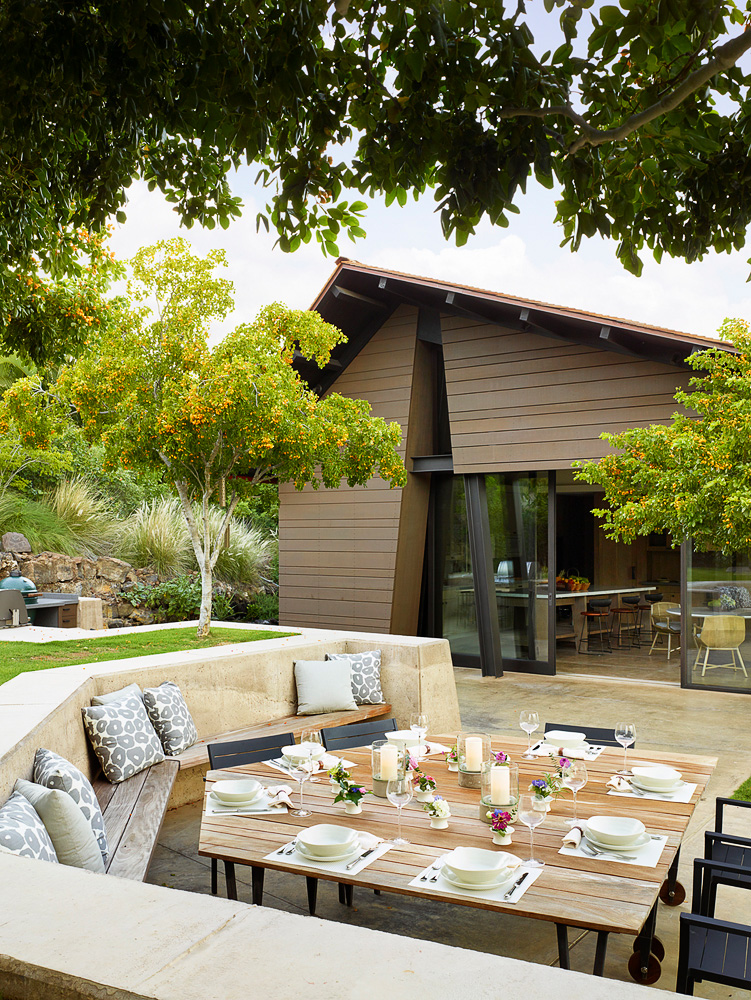
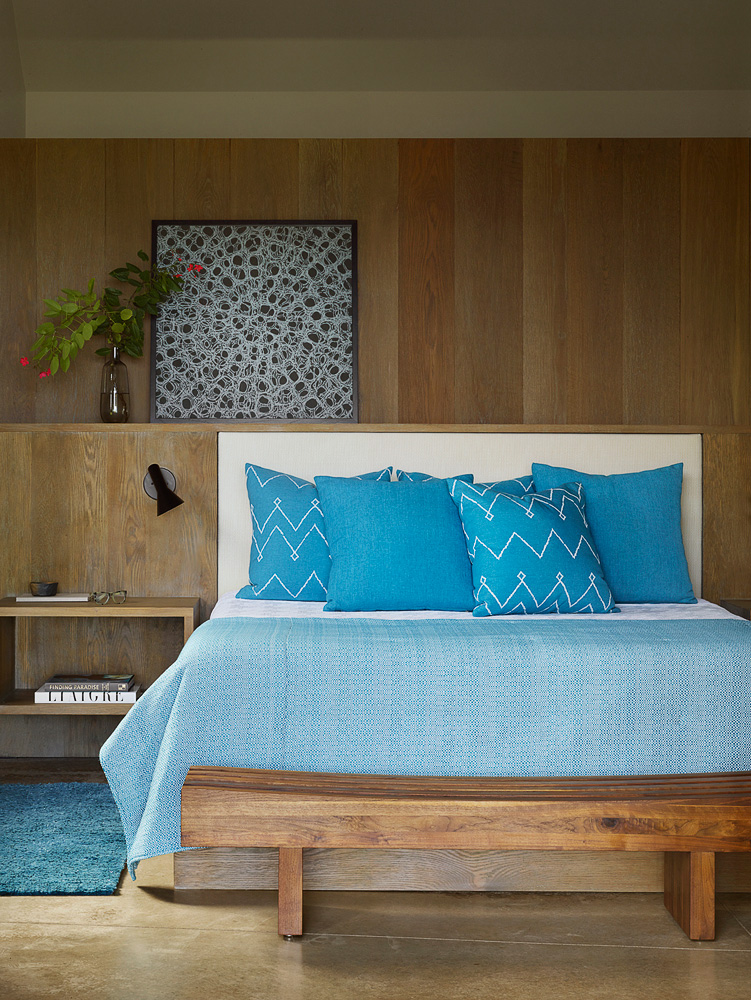
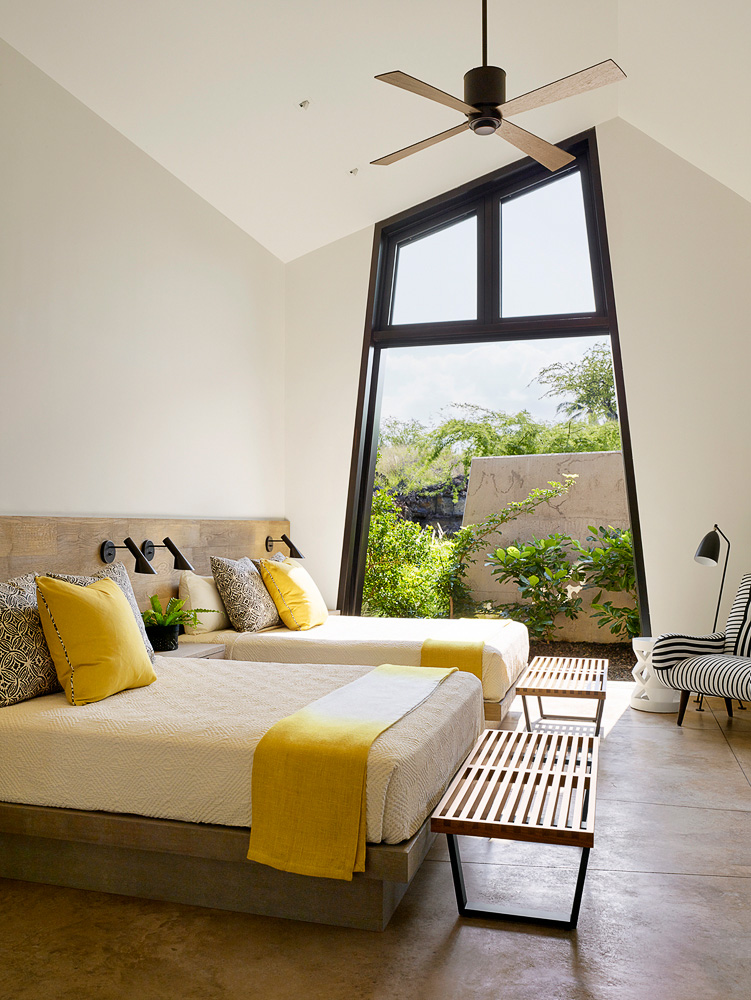
Guest suite bedrooms open onto concrete-walled private courts for additional seclusion. The arrangement assumes that the three-bedroom residence feel expansive and take advantage of the views.
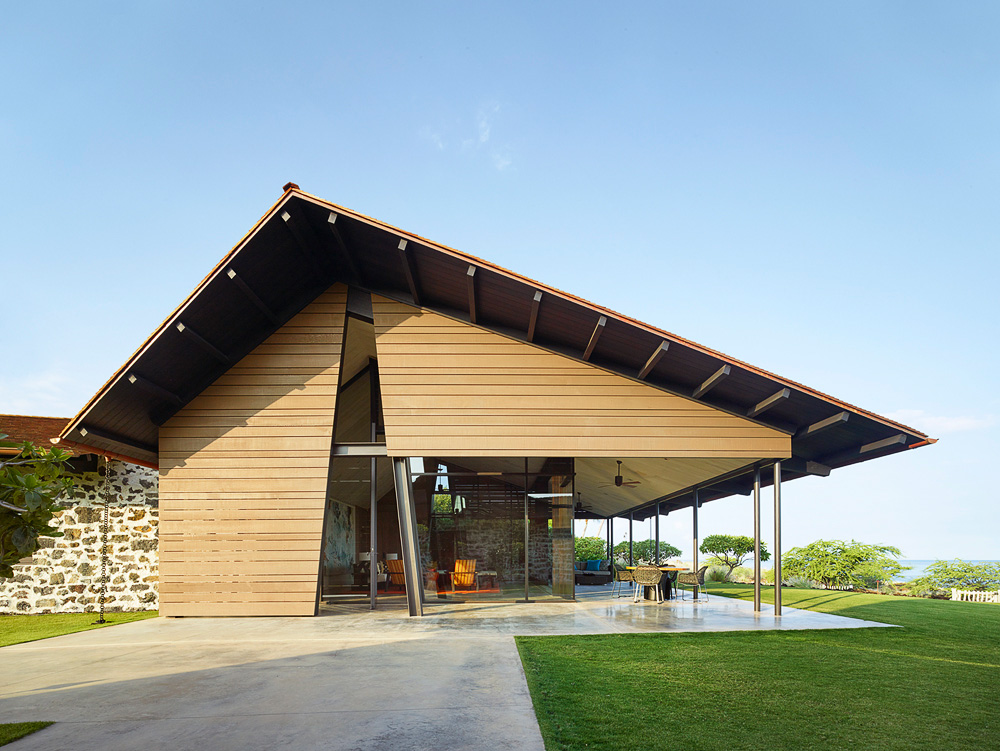
The use of heavily mortared lava rock was inspired by the historic Mokuaikaua Church, located in nearby Kailua. Windows are framed in stained sapele mahogany. Western red cedar serves as the dominant wood—both for cladding and the roof shingles—since it resists heat, moisture, and insects. Inside, stained and lightly polished concrete flooring keeps things cool during the day.
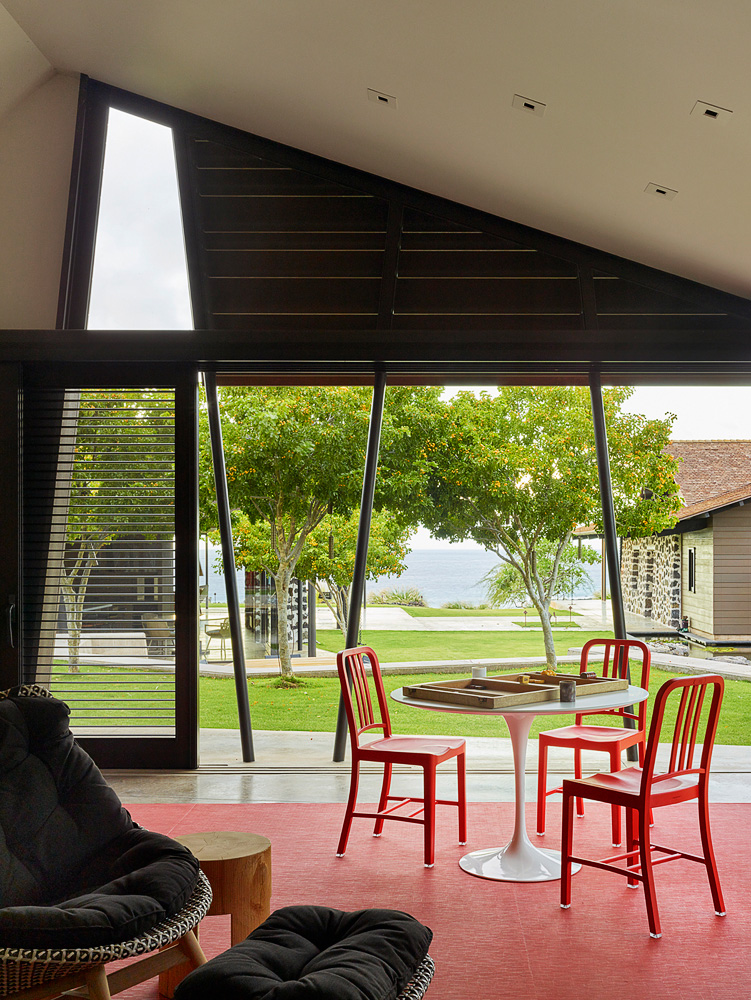
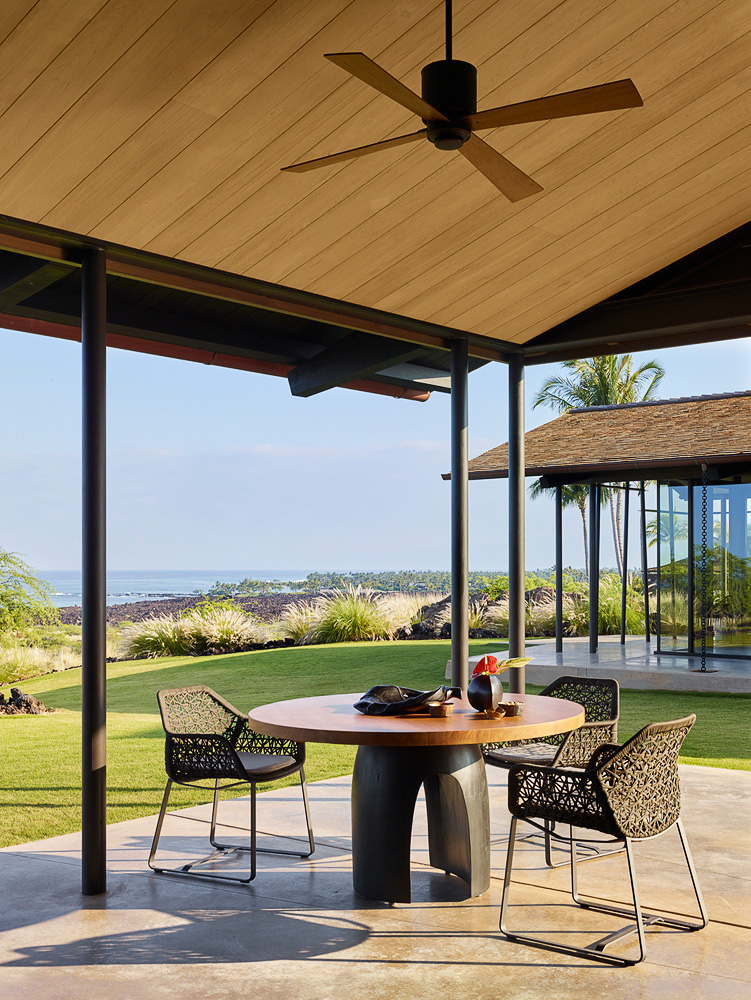
Inside spaces flow seamlessly to outside
Sapele-framed sliders glide open to the elements, and operable windows swivel to coax in the breeze and encourage cross ventilation. “The living room unfurls to become porch-like,” Warner adds, noting the continuity of floor and ceiling materials between interiors and adjacent alfresco spaces.
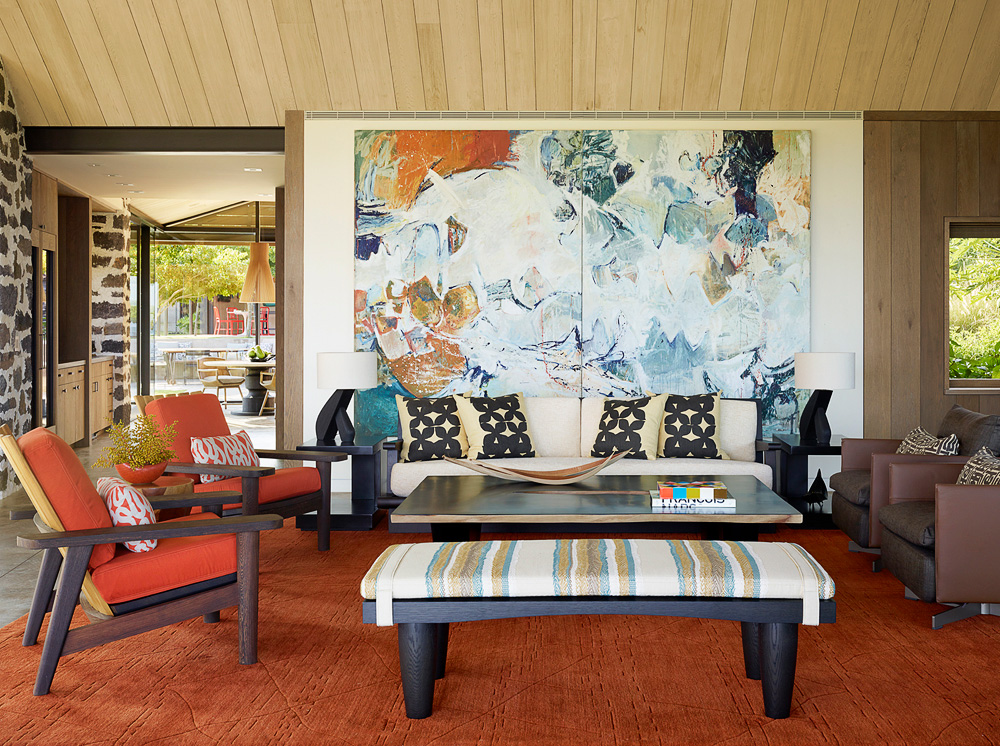
The degree of openness led Marion Philpotts-Miller of Philpotts Interiors to favor “indestructible” solution-dyed acrylic upholstery for much of the casual furniture. A Lee Kelly oil on canvas animates the living room’s assemblage of Christian Liaigre furnishings, including an oak lamp and sofa and wenge lounge chairs; the ceiling slats are bleached Douglas fir.
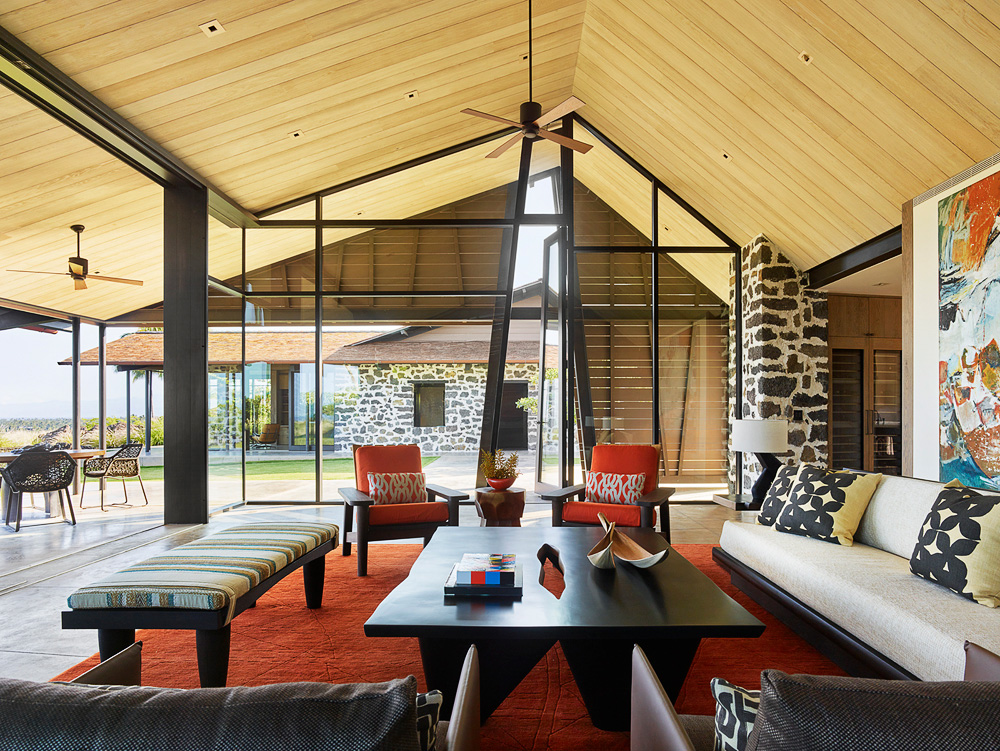
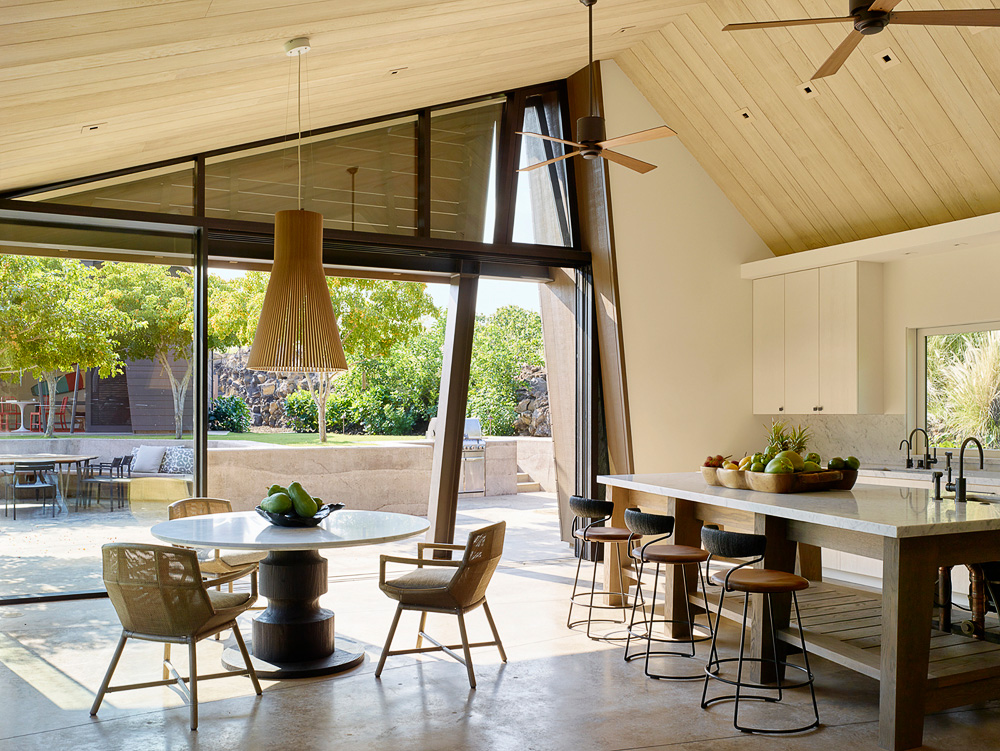
The kitchen’s island and table are topped in honed Cararra marble.
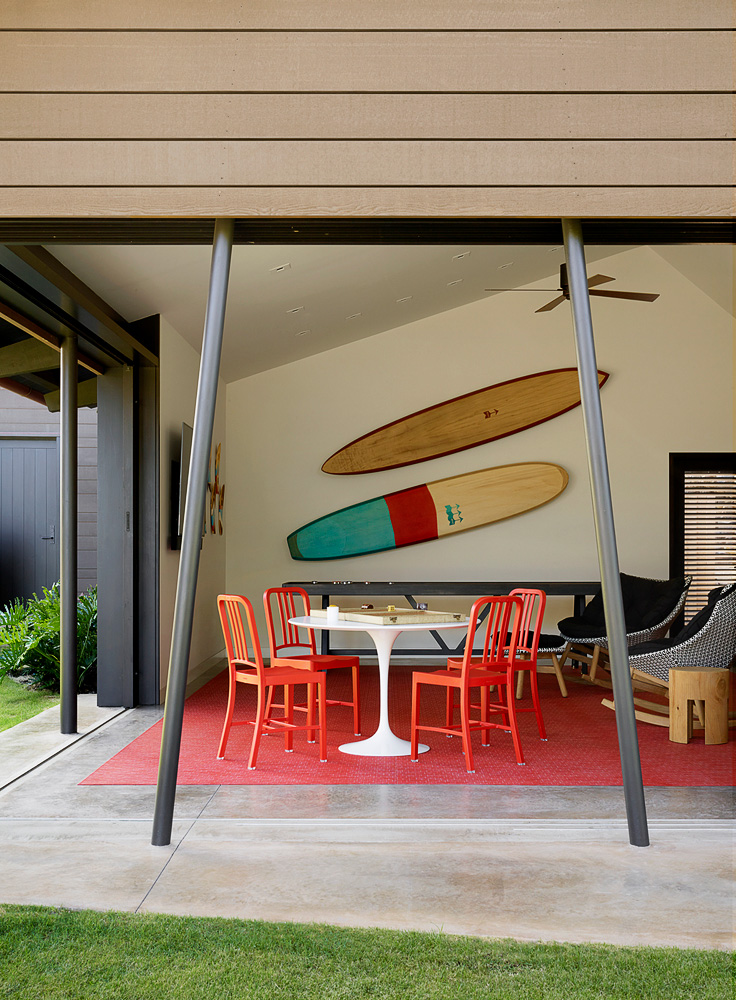
Custom surfboards—one hand-painted, the other crafted of paulownia—hang above the rec room’s Eero Saarinen table.
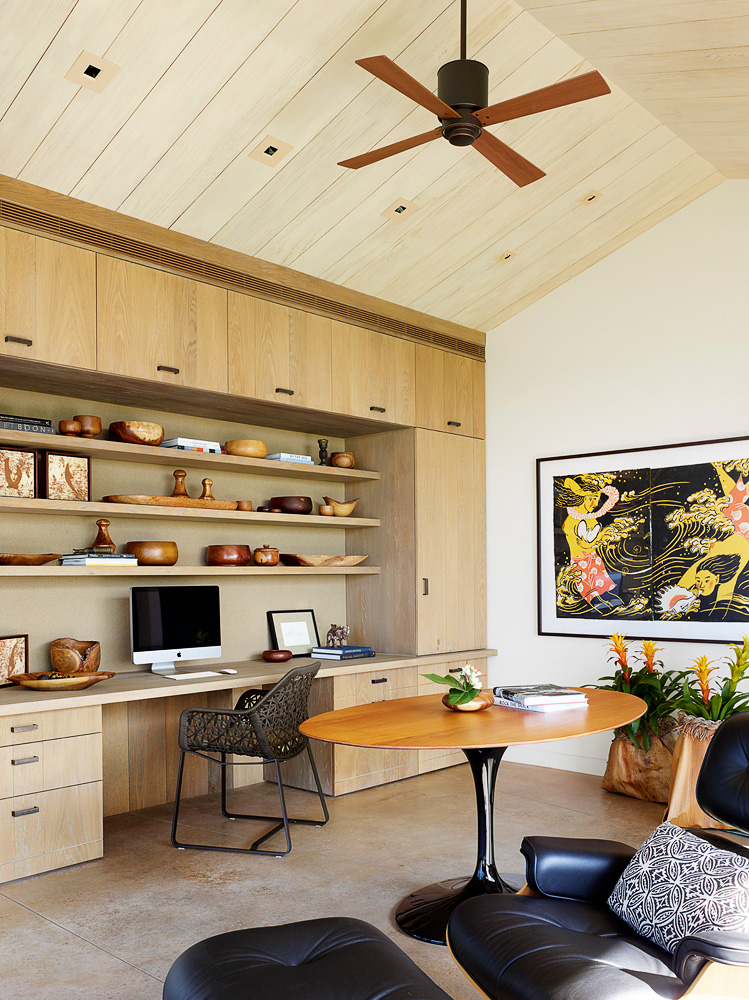
The scheme is no-frills, simple, and airy, with a midcentury vibe that Philpotts-Miller explains was inspired by the work of Hawaiian modernist Vladimir Ossipoff. “Because the architecture is so thoughtfully put together and there’s so much natural texture, we didn’t need to load up the interiors,” she says.
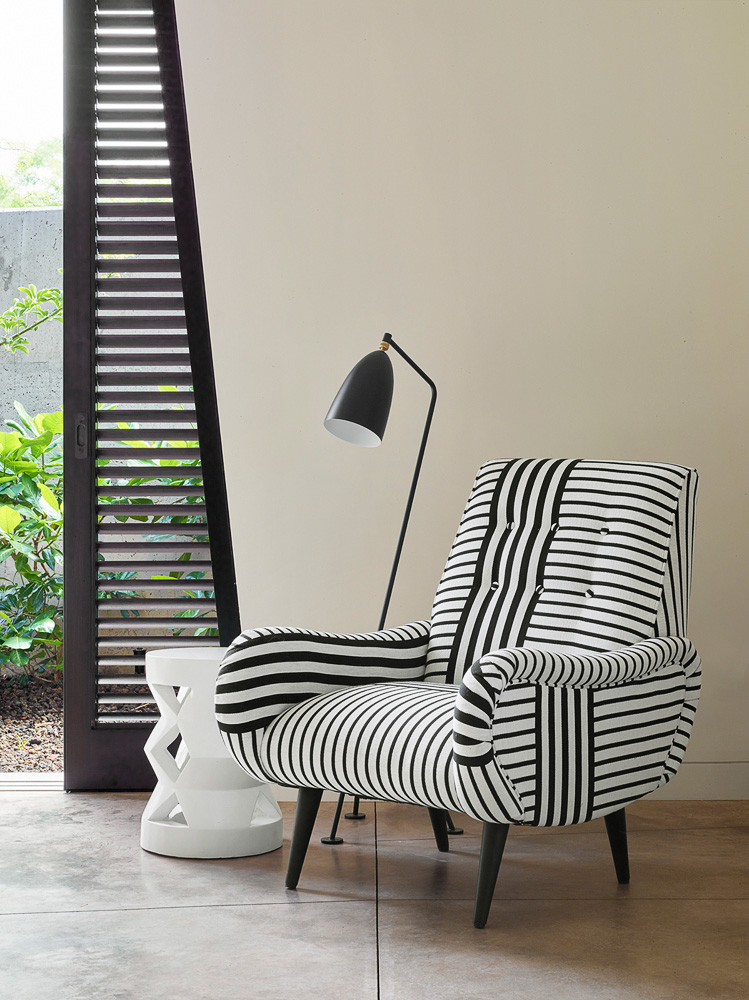
Walker Warner Architects project team
Principal: Greg Warner, Principal, AIA, LEED AP
Senior Project Manager, Architect: David Shutt
Project team: Rob Campodonico, Anja Hämäläinen, Boyce Postma, Rina Wiedenhoeft
Project team
Walker Warner Architects: Architecture
Philpotts Interiors: Interiors
David Y. Tamura Associates: Landscaping Consultant
Lighting & Engineering Integrated: Lighting Consultant
Hayes Structural Design: Structural Engineer
Mark Morrison Mechanical Engineering: M/E/P
Kona Wai Engineering LLC: Civil Engineer
Arc Wood & Timbers; Na Kalai La’au Woodshop: Woodwork
Oakes Management: General Contractor
Photography
Matthew Millman
